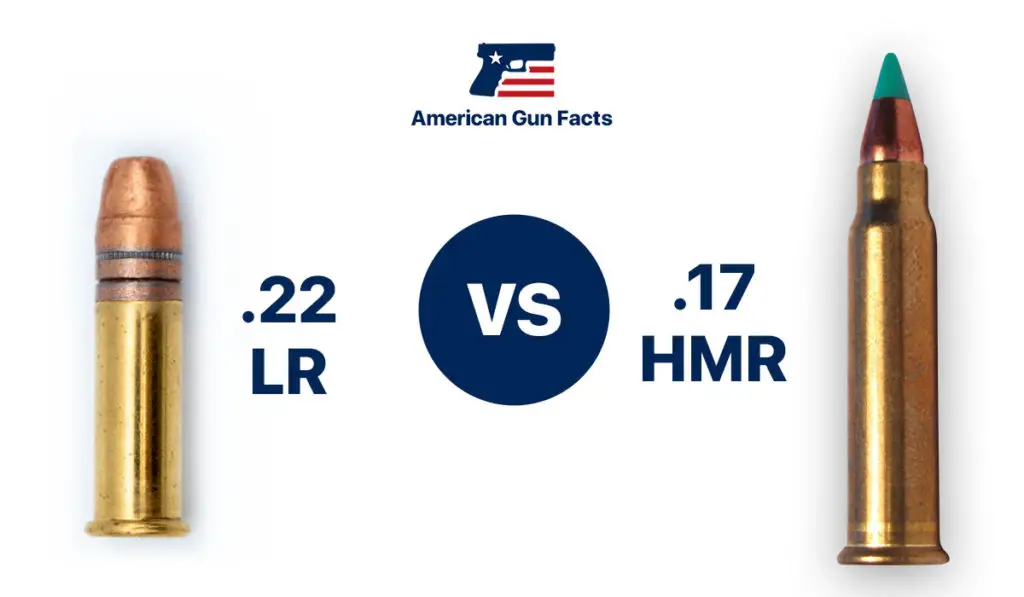If you have been looking into rimfire rifles lately, you have probably been trying to decide between the two main options, .17 hmr, and .22 lr, and wondering which one is going to be a better choice for the application you have in mind.
We’re going to do a deep dive into these two rounds, taking a look at what makes them similar and just how drastically they can differ.
The History of Each Cartridge
The histories of these two rifle cartridges are completely different, even though they are both rimfire ammo and relatively close in bullet diameter. The .22 lr, known longhand as the .22 caliber Long Rifle (lr) cartridge, was first developed in 1887 by Alexander Arms and has since become one of the most popular calibers in existence.
The .17 Hornady Magnum Rimfire, or .17 hmr, is a far newer caliber of rimfire ammo that only hit the market in 2002, making it an extremely recent addition to the world of rimfire rifle shooting. It offers a vastly different shooting experience from the .22 lr, and while they are similar in some ways, their differences clearly set them apart.
Comparison of .17hmr vs .22lr
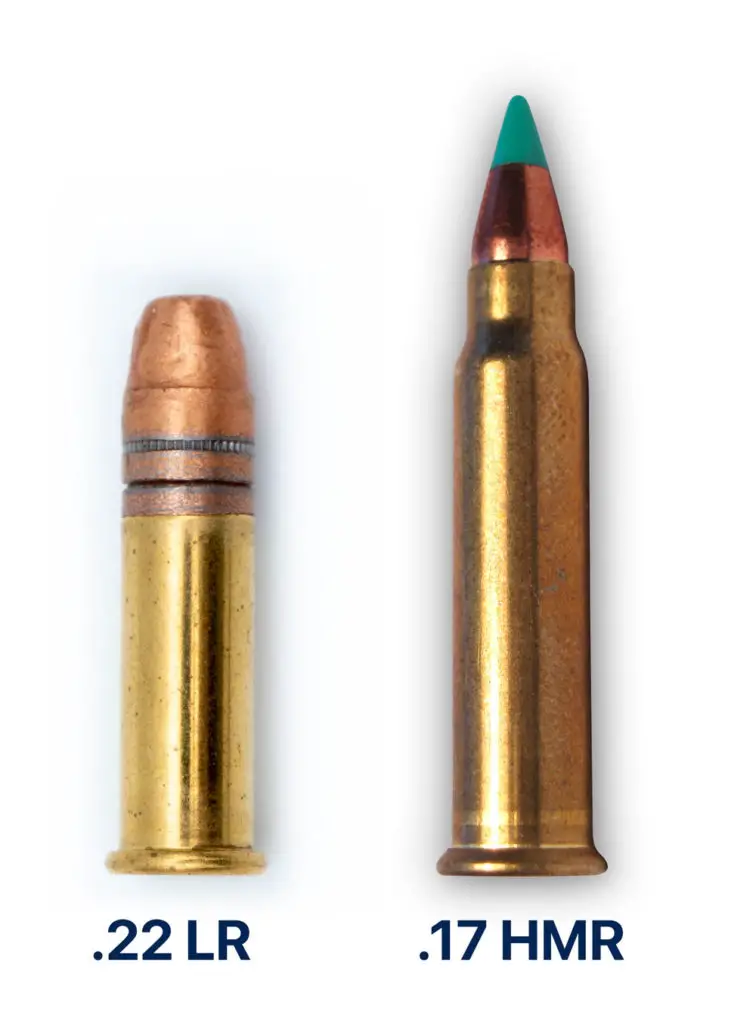
| 22 LR | 17 HMR | |
| Designed | 1884 | 2002 |
| Bullet Diameter | .223 in (5.7 mm) | .172 in (4.4 mm) |
| Total Length | 1.0 in (25.4 mm) | 1.349 in (34.3 mm) |
| Max Pressure | 24,656 PSI (170 MPa) | 26,107 PSI (180 MPa) |
If you compare the .22 lr and .17 hmr side by side, you’re going to see a few similarities, but also some differences. Choosing the best really depends on your wants and needs. Maybe you’re looking for something that can be used for plinking, or maybe you want to go out hunting small game.
.17 hmr is a great choice if you’re looking for something that is both powerful and budget-friendly, while the .22 lr is a bit more expensive and a better choice for smaller targets. .22 lr is generally more popular, mainly because it is generally easy to get ahold of, has low noise, low recoil, and it’s a great caliber for seasoned hunters and beginners alike.
The ballistics of the .17hmr and the .22 lr may seem incredibly close, or even similar at points, but with such low bullet weight, even the smallest differences can mean a drastic change in performance and potential use.
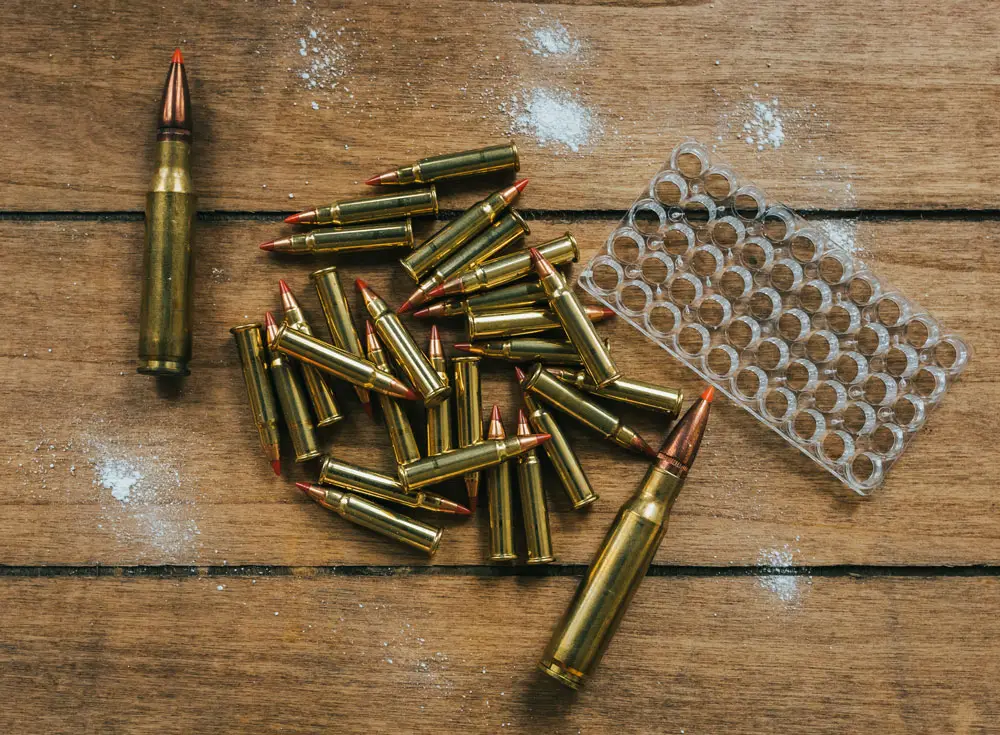
Velocity
The .17 HMR has significantly more velocity (2000 ft/s) than a .22 LR (1600 ft/s).
The .17 Hornady magnum rimfire ammo has a far greater effective range than .22 lr ammunition due to the higher velocity retention. For .22 lr, you’re going to want to make sure that your target is no farther than 75 yards, after that the velocity diminishes enough that the bullet drops from its mark.
Outside of the 75-yard mark, most shots with a .22 lr will not be humane kills, and will most likely result in slow deaths, or simply injury. For greater distance, the .17 hmr will have the velocity needed to make it to the target while still being an effective shot.
.22 lr bullets will leave the rifle with a muzzle velocity of between 1000 and 1600 feet per second. .17 Hornady will often travel upwards of 2000 ft/s after leaving the muzzle.
The speed retention of each bullet is going to be different as well. .17 hmr ammo will lose a greater percentage of its energy during flight, but when the round lands it will hit with a greater speed and as a result, energy.
While .22 lr rounds travel at an average of about 1500 ft/s, they still hit a target at 100 yards away while still moving at approximately 1000 ft/s. A .17 hmr cartridge will leave the barrel at about 2500 ft/s, and when the shot lands 100 yards away it will likely still be traveling at nearly 2000 ft/s.
Kinetic Energy
The .17 HMR has more kinetic energy (220 ft lbs) than the .22lr (95-200 ft lbs).
The energy imparted into the bullets is significantly different between .17 hmr and .22 lr cartridges. The .17 hmr will have an energy of more than 220 ft-lbs. of force. .22 lr bullet, on the other hand, will only leave the barrel carrying between 95 – 200 ft-lbs. of force, depending on the bullet weight and the load.

This energy is used up at varying rates as the bullets travel, and what energy is left when the bullet reaches its target is the energy that’s going to transfer to the target. This is important when shooting a target while hunting, and while necessary for plinking, isn’t a make-or-break factor.
.17 hmr rounds will drop from about 240 ft-lbs of energy leaving the barrel, all the way down to around 130-140 ft-lbs when impacting a target 100 yards away. The lighter bullet from a .22 lr will leave the gun carrying between 100-200 ft-lbs. of force, and will only fall to about 80 ft-lbs. when finding its mark. While there may be less energy overall, there is also a smaller percentage lost during travel for the .22 lr round.
Stopping Power
The 17 HMR is much more powerful than the 22 LR. For small game, the stopping power of the 17 HMR may be excessive and overly destructive.
The biggest concern for many shooters is going to be the raw stopping power of the round they’re using. When comparing .17 hmr to .22 lr, the stopping power is going to be far different when evaluated at differing ranges.

For most small game the .22 lr will have all the stopping power that most shooters will need, for anything under 100 yards, with the greatest effective range being 75 yards or less.
While the .17 hmr also has significant stopping power, it will have such at a much greater range than .22 lr. This also means it may be overly powerful at ranges that are too close, which is particularly true for the .17 hmr ballistic tips, which produce powerful expansion upon impact.
This leads the .17 hmr to be too powerful to use on most smaller animals or pests that are at the 50-yard range or less. Shooters hoping to gather meat from smaller prey like squirrels should be careful to only take them at a longer range, otherwise, there is a large chance that the bullet expansion may not leave much left for the hunter.
Range
The .17 HMR has significantly longer range than the .22 LR due to its much faster velocity.
The range difference between the two cartridges is stark. A .22 lr shot can be expected to be functionally effective at ranges of up to 75 yards, occasionally out to 100 with stronger loads. This leaves some gap in coverage for longer shots.
The .17 hmr round will be almost completely opposite, being most effective at ranges of 50 yards or more, often being completely effective and lethal at ranges of 100 to 150 yards.
Cost Of Ammo
A box of .22 LR is significantly cheaper than a box of .17 hmr ammo.
.17 HMR will run you around 45 cents – 55 cents a round. While .22 LR can be found as cheap as 13 cents a round depending on grain and casing.
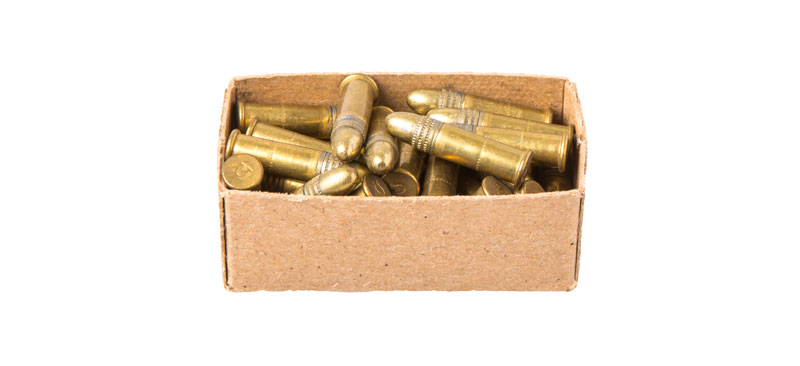
This is largely due to the longer case length and the larger amount of powder used to send the projectile, even though it is a lighter bullet than a .22 lr round.
This will give .22 lr a clear advantage to those who shoot targets for general recreation, often called plinking, over the .17 hmr cartridge. The more expensive .17 hmr will ultimately be well worth the cost, however, if the user is going to end up at a competitive shoot.
When To Use .17 hmr & When To Use .22 lr
Both of these rimfire rounds are versatile and can fill a variety of roles, there are some situations, however, where one will have a clear edge over the other. Knowing when you may need a rifle chambered for .22 lr vs .17 hmr can be a crucial factor in deciding which one you end up with. Here are some use-cases where you may find yourself clearly choosing one round over another.
Varmint Hunting
One of the most common reasons that shooters get rimfire rifles is that they need a smaller bore bullet for pest control and small varmints. Most ammo is far too big for small game, has too much recoil, and is too expensive to use effectively.
Smaller ammunition means it can be used at close range, with minimal recoil, with consistent accuracy. While both the .17 hmr and the .22 lr can be used when hunting small animals, the higher muzzle energy and bullet speed of the Hornady cartridge mean that the varmints should be much farther away than with other bullets.
Varmint hunting also generally means you don’t want to be dumping tons of cash into your bullets, another situation where rifles chambered for .22 lr have an edge over .17 hmr.
Small Game Hunting
Depending on just what you’re going after when you go small game hunting, you may need to put some serious consideration into this part. In many cases, the .17 hmr is a great option for hunting small game, but if your game gets too small, you may be looking at results you didn’t anticipate.
If you hunt with a .17 hmr, animals like foxes and coyotes are going to be ideal, even some larger rabbits or raccoons. Once you start putting smaller mammals in the crosshairs, you run the risk of there not being enough animal to soak up the energy that the bullet is going to carry.
If you find that you spend any time squirrel hunting, or hunting animals around that size, you are almost certainly going to want to stick to rifles chambered for .22 lr. For shooting squirrels or similar varmints, the lower kinetic energy of the .22 lr will help prevent your quarry from turning into furry red mist.
The higher velocity and greater muzzle energy of the .17 hmr vs .22 cartridges make sure the bullet shoots flat, but it also packs a huge punch when it hits the target, and that energy has to go somewhere.
The exception to this is if you find yourself targeting ground squirrels, prairie dogs, or small critters that are out at a farther effective range, where more of that energy will be used up in flight.
Target Shooting
Target shooting can be done with either .17 hmr or .22 lr, though there are different scenarios that will make all the difference. Those target shooting competitively will find that the high velocity of the .17 hmr ammunition gives the flat shooting ammo more accuracy, as well as a greater range.
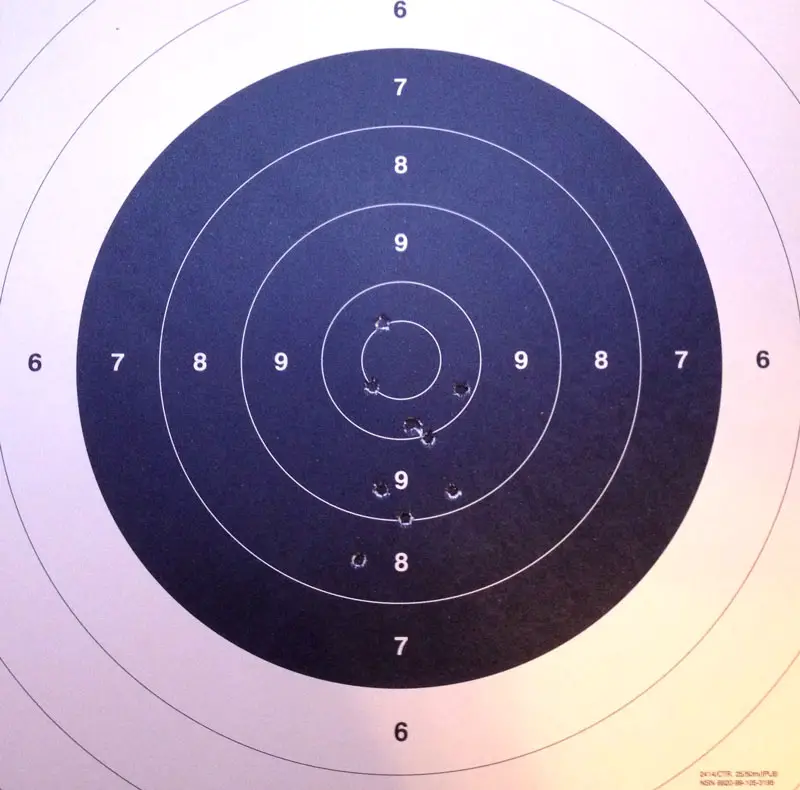
.17 hmr ammunition will have greater accuracy than .22 lr, but it also comes at a significant price. Those who are shooting for recreation or general plinking should stick with the .22 lr since ammo will always be pretty cheap and plentiful.
Those shooting for competitions, or trying to get smaller MOA groups at longer distances can benefit from the higher accuracy of the .17 hmr cartridge. Most shooters, however, won’t need the extreme muzzle velocity of the .17 hmr cartridge.
Availability Of Guns & Ammo For .17hmr & .22lr
There is no shortage of guns for either caliber option, however, for rifles that fire the .17 hmr, you may have to do a little more legwork. Chances are slim that you’re going to find one at your local sporting goods store, but they can be found in abundance online and even in local gun or pawn shops. While .22 rifles can be found in nearly any sporting outlet and even some department and big-box stores.
Ammo for the .17 hmr, on the other hand, will generally be much more difficult to find in person, given that .22 lr is much more common, and that many locations are still having significant difficulty in keeping their ammo shelves stocked due to supply chain issues. Ammo for .22 lr is so common, that in some cases even when all other calibers may be sold out you can still get a box of .22 relatively easily.
Wrap Up
Whether you’re looking to get into professional competitive shooting, or looking for a small game hunting and target shooting rifle, you’ll have plenty of choices available in the caliber you choose.
Remember that you will need to consider the target that you’ll eventually be shooting, as well as whether that target will be able to stand up to the speed and power of ammunition with more propellant.
No matter which you choose, you’ll have one of the best rimfires available for recreational shooting and hunting small game.
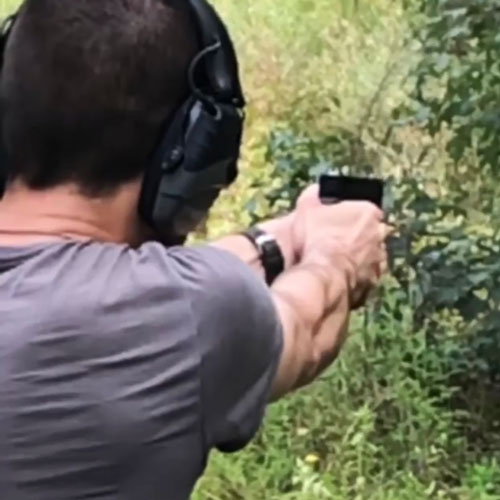
Growing up, John loved learning about the components of firearms and what makes them work, which still intrigues him to this day. He’s a very outdoorsy person, and he loves fishing, hunting, and skeet shooting. He is a firm believer in the Second Amendment and the right to bear arms.
